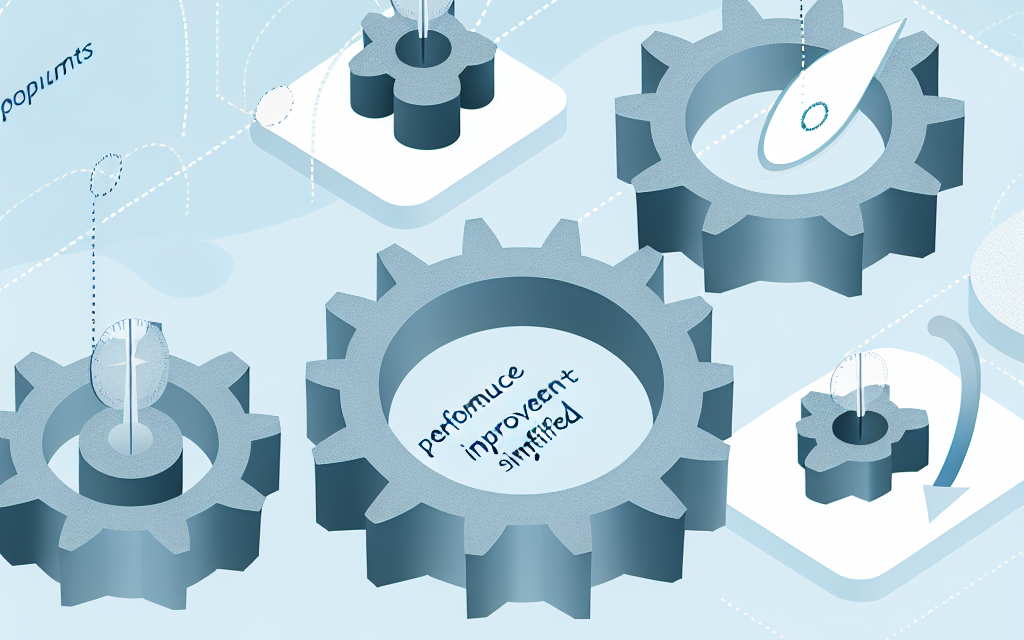Performance Measurements and Continuous Improvement Simplified
In today’s fast-paced business environment, organizations must continuously evolve and improve to stay competitive. Performance measurements, continuous improvement, and benchmarking are three pillars that play an essential role in this evolution. Let’s explore these concepts and understand how they contribute to the overall success of an organization.
Understanding Performance Measurements
Performance measurements are critical for evaluating how well an organization is doing against its objectives. By establishing clear metrics and objectives, businesses can assess their operations effectively. Performance measurements provide insights into efficiency, productivity, and effectiveness. Therefore, organizations can identify areas needing improvement and adapt strategies accordingly.
The Role of Continuous Improvement
Continuous improvement refers to the ongoing efforts to enhance products, services, or processes. By adopting a mindset focused on improvement, businesses can respond more quickly to changes in the market and enhance the quality of their offerings. To achieve continuous improvement, organizations often employ methodologies like Lean and Six Sigma, which emphasize waste reduction and process optimization.
Benefits of Continuous Improvement
- Enhanced Efficiency: By streamlining processes, organizations reduce cycle times and eliminate bottlenecks.
- Improved Quality: Continuous feedback and refinement lead to higher quality products and services.
- Increased Employee Engagement: When employees see that their feedback leads to real change, their engagement and morale increase.
Leveraging Benchmarking
Benchmarking involves comparing business processes and performance metrics to industry bests and best practices from other organizations. This technique helps organizations understand where they stand in relation to their competitors and identifies improvement areas. By looking outward, businesses can adopt proven strategies and enhance their operational performance.
Types of Benchmarking
- Internal Benchmarking: Comparing your own departments or processes to identify best practices within the organization.
- Competitive Benchmarking: Analyzing competitors to understand their strengths and weaknesses.
- Functional Benchmarking: Comparing specific functions or processes in your organization against industry leaders, even if they operate in different sectors.
Linking Concepts for Maximum Impact
Effective integration of performance measurements, continuous improvement, and benchmarking creates a robust performance management system. By measuring and monitoring performance, organizations can set realistic goals. Moreover, through continuous improvement practices, they can address the gaps identified during benchmarking. Such an iterative approach ensures that the organization adapts and grows in alignment with industry standards.
Building Personal Effectiveness
Additionally, developing personal effectiveness alongside organizational goals enhances overall performance. Leaders can benefit significantly from honing their skills, as highlighted in several insightful articles. For instance, boosting personal effectiveness can be achieved using positive skills, as discussed in this article on personal effectiveness. Furthermore, maximizing impact and productivity is key, as elaborated in another resource.
FAQs
What are performance measurements?
Performance measurements are metrics used to assess how effectively an organization is meeting its goals and objectives. They provide crucial data for decision-making and strategic planning.
Why is continuous improvement important?
Continuous improvement is vital because it helps organizations adapt to changes, enhance quality and efficiency, and foster a culture of innovation. This ongoing process results in better products, services, and overall performance.
How does benchmarking benefit an organization?
Benchmarking benefits organizations by providing insights into industry standards and best practices. By comparing operations to top performers, businesses can identify areas for improvement and implement strategies to enhance their performance.
Conclusion
In conclusion, performance measurements, continuous improvement, and benchmarking are indispensable tools for organizations aiming to excel in their respective fields. By embracing these practices, businesses can ensure they are not only meeting but exceeding their goals. For more in-depth insights on these topics, consider exploring Performance Measurements, Continuous Improvement & Benchmarking. Actively implementing these strategies will undoubtedly lead to sustained growth and success.
For leaders seeking to unlock creativity and achieve peak performance, consider reviewing best practices available at leadership practices for peak performance and explore the significance of leadership best practices.





